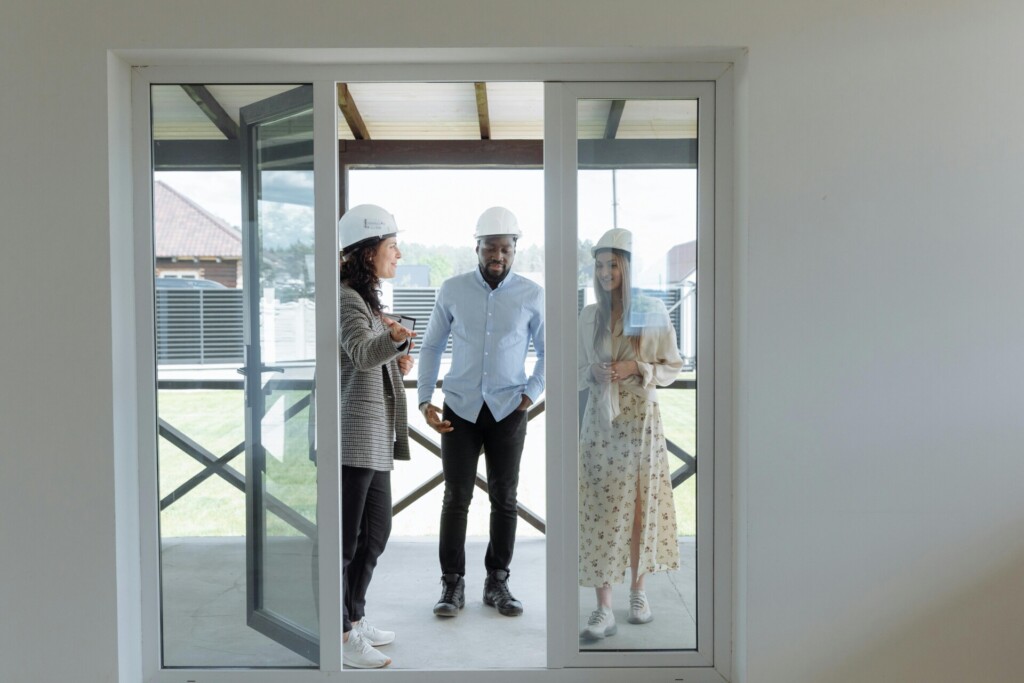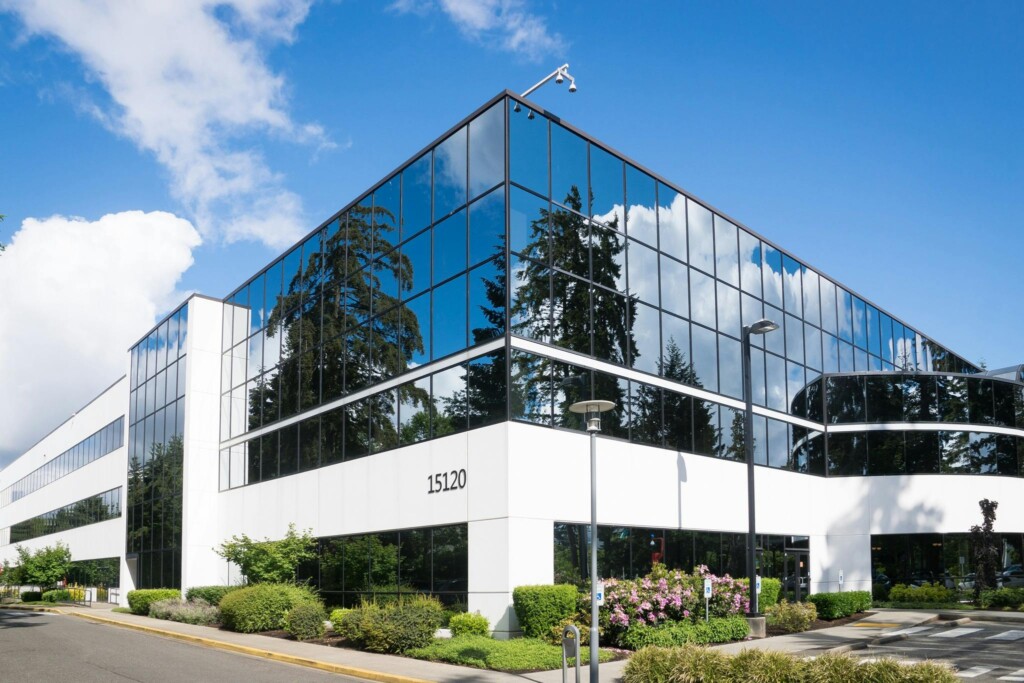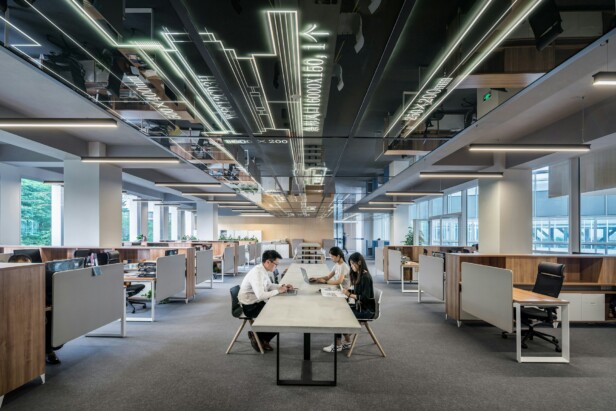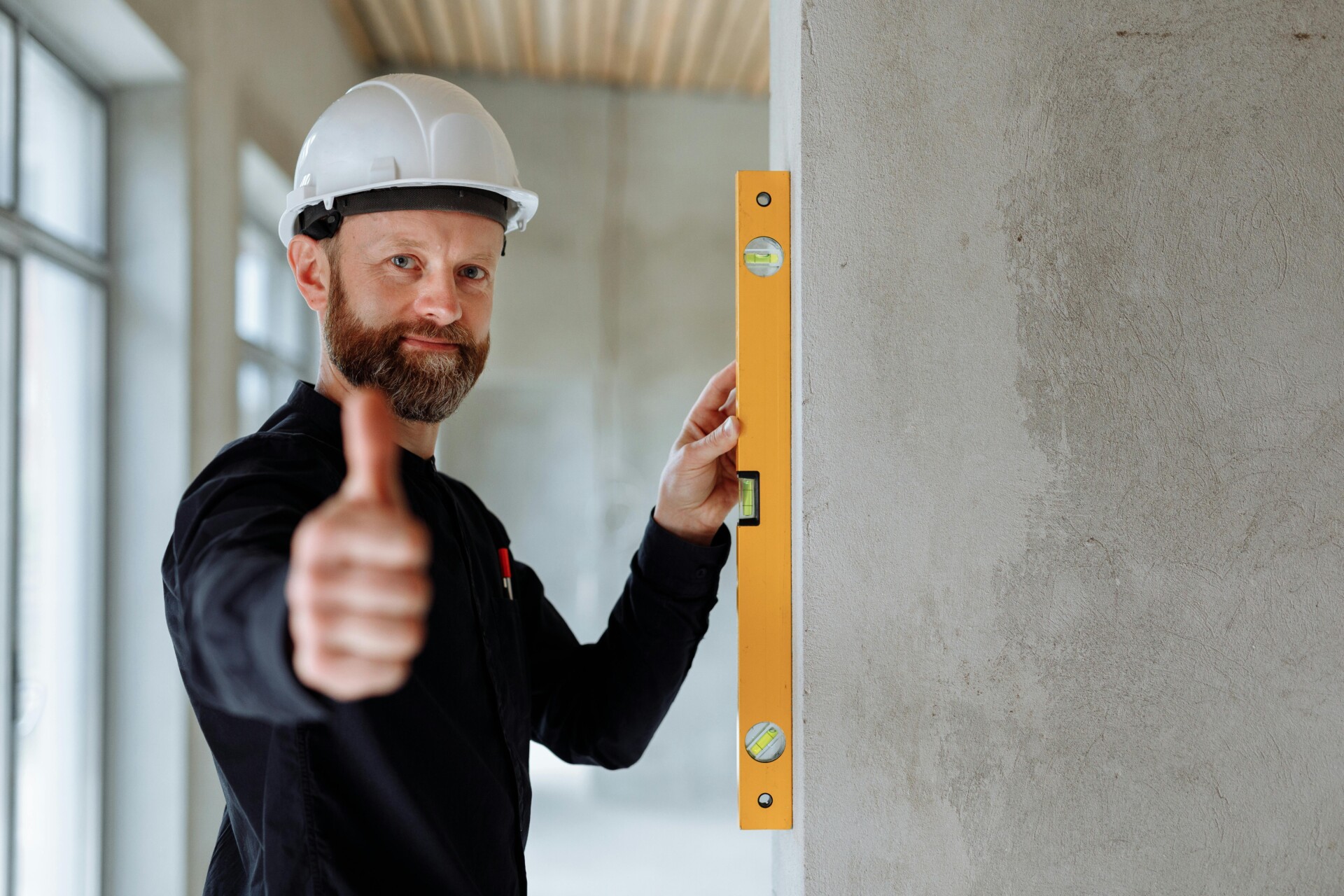Replacing or upgrading an HVAC system is one of the most significant capital expenditures a Dallas office building owner will face.
With complex equipment, variable labor costs, and the demands of the Texas climate, establishing an accurate budget from the start is crucial. This article provides a comprehensive cost breakdown, from initial estimation frameworks to specific add-ons and long-term maintenance considerations, helping property owners scope their projects realistically.
Disclaimer: Pricing figures are based on publicly available market data and are intended for general estimation purposes as of October 2025. They do not represent a formal quote from EB3 Construction. Actual costs will vary by project scope, location, labor rates, and material prices.
Establishing Your Base Project Budget

When planning HVAC upgrades for Dallas office buildings, we use two primary budgeting frameworks to establish realistic cost expectations. These approaches help property owners scope projects accurately before diving into system specifications and site-specific requirements.
Per-Ton Pricing Framework
Commercial HVAC replacement typically costs between $1,800 and $2,200 per ton of cooling capacity. This per-ton approach provides a baseline for initial budgeting across different system sizes. For example, a recent cost breakdown shows a 10-ton rooftop unit priced around $19,715, which aligns closely with industry averages for tonnage-based pricing.
The per-ton method works particularly well when comparing similar system types or when building load calculations are already established. We find this framework especially useful for straightforward replacements where existing tonnage provides a reliable starting point for capacity sizing.
Per-Square-Foot Office Building Rates
The square footage approach offers another perspective for Dallas office projects in 2025. Small office buildings typically see costs ranging from $20 to $28 per square foot. Large office buildings generally fall within $28 to $33 per square foot, reflecting the increased complexity and infrastructure requirements of larger commercial spaces.
This per-square-foot framework accounts for the varying demands of different office configurations. Smaller offices often have simpler layouts and fewer zones, while larger buildings require more sophisticated controls, additional equipment, and complex distribution systems.
System Type Cost Ranges
Different HVAC system types carry distinct price ranges based on their complexity and installation requirements. Rooftop units range from $10,000 to $45,000, making them a popular choice for many office applications due to their relatively straightforward installation process.
Split systems cost between $7,000 and $40,000, offering flexibility for buildings where rooftop installation may not be practical. Variable Refrigerant Flow systems represent the higher end at $15,000 to $50,000 or more, but provide superior zone control and energy efficiency for larger office buildings.
Ductless multi-zone systems fall in the $8,000 to $35,000 range, making them attractive for office renovations or spaces where traditional ductwork installation would be disruptive. Each system type brings unique advantages depending on building layout, occupancy patterns, and operational requirements.
These cost ranges establish a foundation for budgeting before factoring in site-specific conditions, add-on requirements, and installation complexities. We recommend using both frameworks during initial planning to validate budget expectations and ensure realistic project scoping.
Which Add-Ons And Line Items Can Change Your Dallas Upgrade Budget?
Beyond base HVAC equipment costs, several add-on expenses can significantly impact your Dallas office building upgrade budget. We coordinate these line items regularly and find that planning for them upfront prevents project delays and cost surprises.
Crane rental represents one of the most common additional costs for rooftop installations. We typically budget $950 to $2,200 for crane services, depending on boom size requirements. Buildings requiring lifts larger than 120 feet need custom quotes due to specialized equipment and logistical complexity.
Air handler lifts add $450 to $650 to projects requiring indoor unit placement or replacement. We use these lifts to safely position equipment in mechanical rooms or elevated areas where standard dollies and hand trucks cannot reach effectively.
| Add-On | Cost Range (USD) |
|---|---|
| Crane rental | $950 – $2,200 |
| Air handler lifts | $450 – $650 |
| Rooftop curb adapters | $1,217 – $2,128 |
| Permit fees | $250 – $1,500 |
| Building inspections | $200 – $800 |
| Electrical upgrades | $1,500 – $5,000 |
| Controls integration | $2,000 – $10,000 |
| Ductwork installation | $8 – $15 per linear foot |
| Ductwork modifications | $2,000 – $8,000 |
| Duct insulation | $3 – $8 per square foot |
| Refrigerant recovery | $200 – $800 |
| Refrigerant handling fees | $100 – $500 |
| Old equipment removal | $500 – $2,000 |
| Roof modifications | $1,000 – $5,000 |
| Hazardous material abatement | $1,000 – $5,000 |
Rooftop curb adapters range from $1,217 to $2,128 based on unit tonnage. Proper curb sizing ensures secure mounting and prevents structural issues that can lead to costly repairs later. We size curbs during initial site surveys to avoid delays during installation.
Permit fees in Dallas typically range $250 to $1,500 for commercial HVAC work. Building inspections add another $200 to $800, depending on system complexity and local requirements. We handle permit coordination to ensure compliance with city codes and scheduling.
Electrical upgrades frequently drive budget increases, especially in older office buildings. We commonly encounter electrical work ranging from $1,500 to $5,000 for panel upgrades, circuit additions, or power supply modifications required for new equipment.
Controls integration costs $2,000 to $10,000 depending on system sophistication and existing building automation compatibility. Modern systems often require programming, sensor installation, and network integration to optimize performance.
Ductwork represents another variable cost factor. New ductwork installation costs $8 to $15 per linear foot, while modifications to existing systems range $2,000 to $8,000. Duct insulation adds $3 to $8 per square foot of duct surface area.
Environmental compliance includes refrigerant recovery at $200 to $800 and refrigerant handling fees of $100 to $500. Old equipment removal typically costs $500 to $2,000, depending on unit size and rooftop access complexity.
Additional considerations include roof modifications ($1,000 to $5,000) for structural reinforcement or weatherproofing, and hazardous material abatement ($1,000 to $5,000) if asbestos or other regulated materials are discovered during removal.
How Does Maintenance In Dallas Impact Lifecycle Cost After An Upgrade?

Annual HVAC maintenance costs in Dallas typically fall between $0.15 and $0.30 per square foot, making it a predictable budget item for office building owners. Comprehensive maintenance contracts usually range from $0.20 to $0.30 per square foot, while premium coverage with enhanced service levels runs $0.30 to $0.40 per square foot.
Well-maintained HVAC systems consistently use 15 to 30 percent less energy than neglected equipment, translating to annual energy savings of approximately $0.20 to $0.40 per square foot. These energy reductions stem from clean coils, properly calibrated controls, and optimized airflow that we verify during routine service calls.
Routine maintenance extends equipment life by 5 to 8 years beyond typical manufacturer expectations. We’ve observed that proactive service schedules reduce emergency calls by 70 to 80 percent, which matters significantly when emergency repairs during Dallas heat waves cost between $1,500 and $3,000 per incident.
Over a typical 15-year ownership period, proper maintenance can lower total ownership costs by 25 to 35 percent. This reduction comes from decreased energy consumption, fewer emergency repairs, and extended equipment life that delays major capital expenditures.
Seasonal planning proves especially important in Dallas’s extreme climate. Spring and fall maintenance visits help reduce peak-season failure risk during the city’s brutal summers and occasional winter freezes. Emergency service during temperature extremes typically costs 2 to 3 times more than scheduled maintenance due to overtime rates and high demand for technician availability.
Dallas’s long cooling season, often extending from April through October, increases the importance of consistent maintenance schedules. We coordinate maintenance contracts around this extended operating period to ensure peak performance when systems work hardest.
What Factors Drive Cost Differences And How Should Offices Plan In Dallas?
Multiple factors create significant cost variations across Dallas office HVAC upgrades. System size and complexity rank as primary drivers, with building layout and access conditions affecting labor requirements. Equipment age influences both replacement approach and compatibility with existing infrastructure.
Provider scope varies considerably between contractors. Some handle complete turnkey installations while others subcontract electrical work, controls integration, or specialized lifting services. These differences impact total project costs and coordination complexity.
Right-Sizing Guidelines For Dallas Offices
Proper system sizing directly impacts both upfront costs and long-term performance. Standard office buildings typically require 1 ton per 300-400 square feet of conditioned space. However, older buildings or high-occupancy environments can need 1 ton per 250-300 square feet due to reduced insulation, higher internal heat loads, and less efficient building envelopes.
We calculate cooling loads based on building orientation, window area, occupant density, and equipment heat generation. Dallas’s intense summer conditions require careful attention to peak load calculations rather than average conditions. Oversized systems cycle inefficiently while undersized units struggle during extreme weather periods.
EPA Refrigerant Regulations Affecting Scope
Current EPA regulations significantly influence upgrade scope and costs. R-22 refrigerant faced complete elimination from new systems, forcing older system replacements rather than repairs. R-410A will be phased out of new equipment manufacturing starting January 1, 2025, as mandated by the EPA’s American Innovation and Manufacturing Act.
Newer refrigerant options include R-32 and R-454B, which offer lower global warming potential. R-454B systems require updated safety protocols since this A2L refrigerant classification indicates mild flammability. These regulatory changes often necessitate complete system replacement rather than component upgrades, affecting project budgets and timeline planning.
Documentation requirements for refrigerant handling add administrative costs. Proper recovery, recycling, and disposal procedures require certified technicians and specific equipment, contributing to overall project expenses.
Provider Selection Criteria For Dallas Projects
Contractor selection directly impacts project costs and outcomes. NATE certification ensures technicians understand current installation standards and safety protocols. We evaluate providers based on response time guarantees, detailed project reporting capabilities, and experience with specific system types.
Local Dallas contractors familiar with city permitting processes can streamline approval timelines. Regional climate experience matters for system sizing recommendations and seasonal planning considerations. Some providers offer performance-based contracts that tie compensation to energy efficiency achievements rather than just installation completion.
Warranty terms vary significantly between providers. Basic equipment warranties differ from comprehensive system performance guarantees that include labor, parts, and emergency response commitments.
Long-Term Cost Control Strategies
Multi-year maintenance agreements typically reduce annual service costs by 5-15% compared to individual service calls. These contracts provide predictable budgeting and priority response during peak demand periods. Performance-focused contracts align contractor incentives with system efficiency and reliability outcomes.
Seasonal work scheduling offers cost advantages in Dallas markets. Spring and fall installations avoid peak summer and winter demand surges when emergency service rates increase substantially. Off-peak scheduling also improves contractor availability and attention to project details.
Energy efficiency considerations during initial planning reduce long-term operating expenses. Higher SEER ratings require greater upfront investment but generate ongoing utility savings that offset initial costs over the system’s operational lifetime.
Conclusion And Next Steps

For Dallas office buildings, establishing the right HVAC upgrade budget begins with proven benchmarks. We set base budgets at $1,800 to $2,200 per ton of capacity or $20 to $33 per square foot depending on building size and complexity. These ranges provide solid starting points, with small offices typically falling toward the lower end and large office buildings requiring higher per-square-foot investments. System selection significantly affects final costs, with RTU installations generally ranging from $10,000 to $45,000, split systems from $7,000 to $40,000, VRF systems from $15,000 to $50,000+, and ductless multi-zone systems from $8,000 to $35,000.
Beyond equipment costs, we factor in essential add-ons that drive project totals higher. Crane rentals run $950 to $2,200 for standard lifts, while curb adapters add $1,217 to $2,128 depending on unit size. Electrical upgrades can reach $1,500 to $5,000, controls integration spans $2,000 to $10,000, and permit fees typically range from $250 to $1,500. Annual maintenance planning at $0.15 to $0.30 per square foot protects the capital investment through energy savings of 15 to 30%, extended equipment life of 5 to 8 years, and dramatic reductions in emergency service calls.
Contact EB3 Construction to discuss your office building HVAC upgrade requirements and receive a detailed project assessment.




